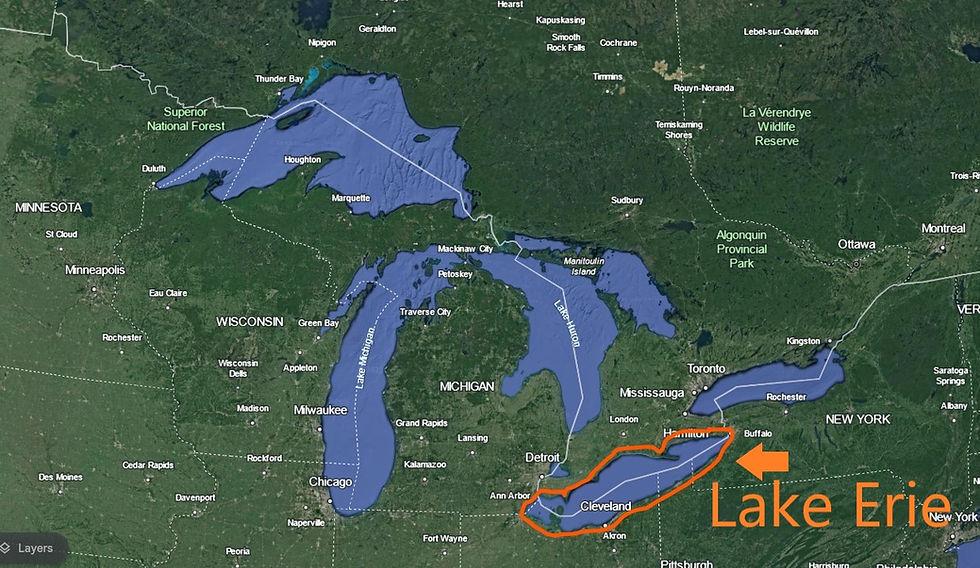The 11th largest lake in the world, and the smallest (by water volume – not surface area) of North America’s five Great Lakes, Lake Erie has probably had the most troubled history with humans.

Indigenous North Americans lived on the shores of the lake for thousands of years without affecting the lake’s ecology in any significant way. When European explorers first came across the lake in 1669, however, the wheels were set in motion that would change Lake Erie’s health for the worse.
Settlers to the flat lands surrounding the lake brought with them farming techniques that saw land deforested and swamps and wetlands drained to grow crops and livestock. Small settlements grew to become towns, then cities. For a long time, Lake Erie’s ecological community could tolerate the changes, but as the human population grew, so too did the lake’s problems.
One of those problems was an issue called eutrophication. This is basically the accumulation, or build up, of nutrients in the water that causes chemical and biological changes to the water quality. But why did this happen and how did it affect the lake?

As farms evolved over the last couple hundred years, more food was being produced on smaller pieces of land – that means more livestock and crops can be raised on every acre - more food for people and better income for the farmers. This is known as intensive farming and would all be good news, but crops need fertilizers and animals need to poop. All of the fertilizers that the crops don’t use, and all of the poop that doesn’t get absorbed by the earth eventually runs into the nearest body of water – which in this case is Lake Erie, or the rivers that run into it. This poop and fertilizer is loaded with nutrients - Nitrogen and Phosphorous among them. Now when too much of this enters the lake the tiny plants in the lake, called phytoplankton, use it to grow and multiply. Often this turns clear water into water with a green tinge due to all of the extra plant life.
The problem with this is that algae can explode in population and when it dies, can use a lot of oxygen in the water, effectively suffocating the other life in the lake causing mass death events such as fish kills. Too many nutrients can cause increases in toxic bacteria too, often called blue-green algae, making water unfit to swim in or drink at times.
Sadly, as Lake Erie struggled with ever-increasing nutrient loads, cities on the lake shores grew with industrial waste and human sewage being dumped into the lake, further increasing the toxins into the water. Poor Lake Erie was dying.
By the late 1960’s the pollution problem was so bad that the Cuyahoga River, which runs through Cleveland and empties into Lake Erie actually caught fire. Believe it or not - this had happened several times before too!

* The Cuyahoga River on fire in 1948, and oil pollution from the river (inset)
In response to this, the U.S. federal government passed the clean water act in 1972 to limit industrial dumping and help clean up water bodies all over the United States.
In the years that followed, Lake Erie’s water quality began to improve. Today, the lake is a popular fishing destination with walleye and smallmouth bass among the most popular species targeted.
While industrial waste has been reduced, Eutrophication from farming still occurs with large algal bloom events occurring throughout the 2010’s. In 2020, Lake Erie was granted its own bill of rights giving it much of the legal protection that people have. The bill helps to keep Lake Erie healthy, because anybody who damages the lake in any way may get into a lot of trouble with the law.
Eutrophication isn't unique to Lake Erie, in fact, it happens all over the world, and while people have a long history of hurting the environment, it’s important to see that we can recover these ecosystems if we just give them a bit of a break. Nature is incredibly good at healing itself if we relieve it of much of the human pressure we put on it!
To learn more about Lake Erie's eutrophication problem, see the video below.




コメント